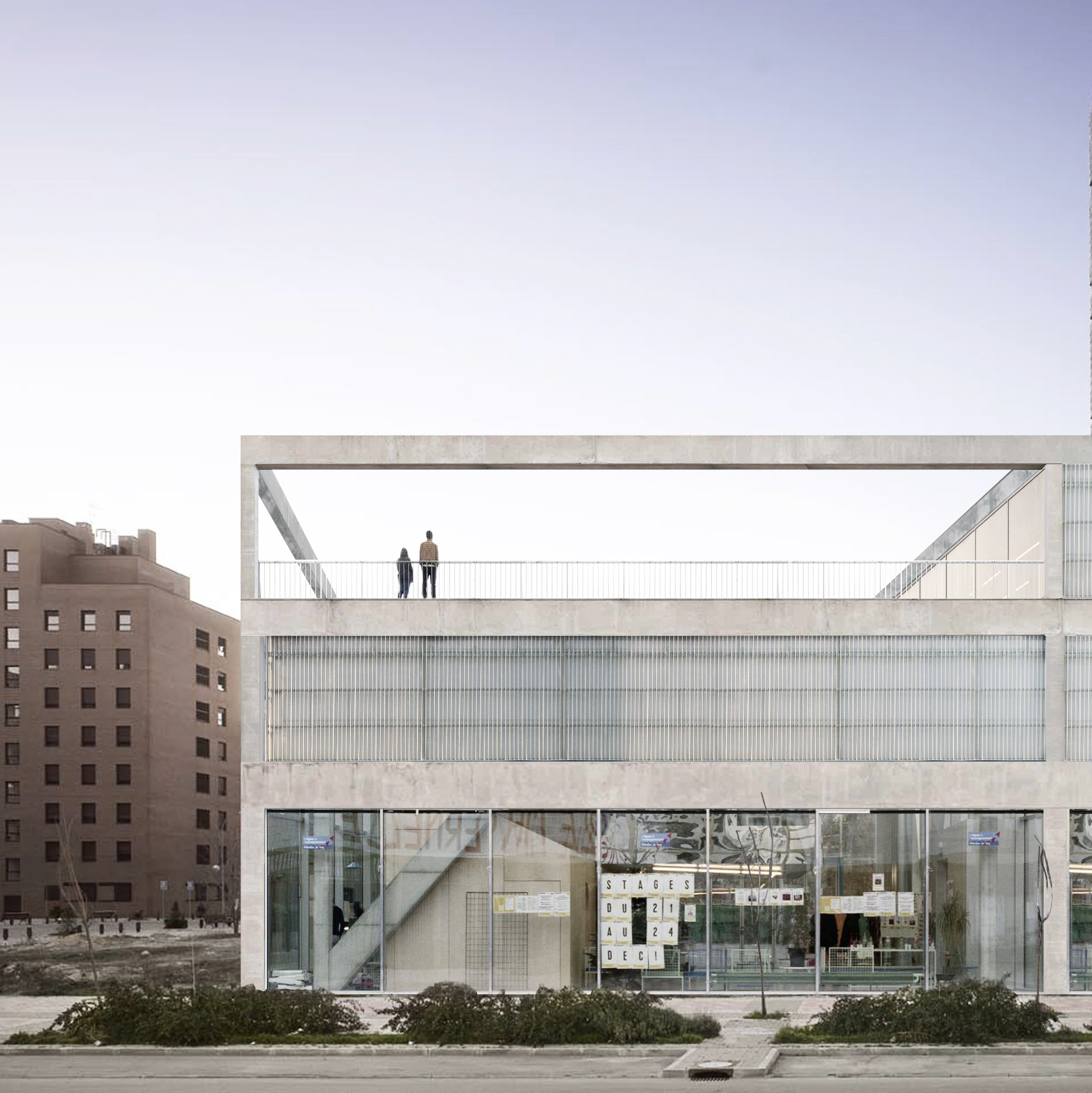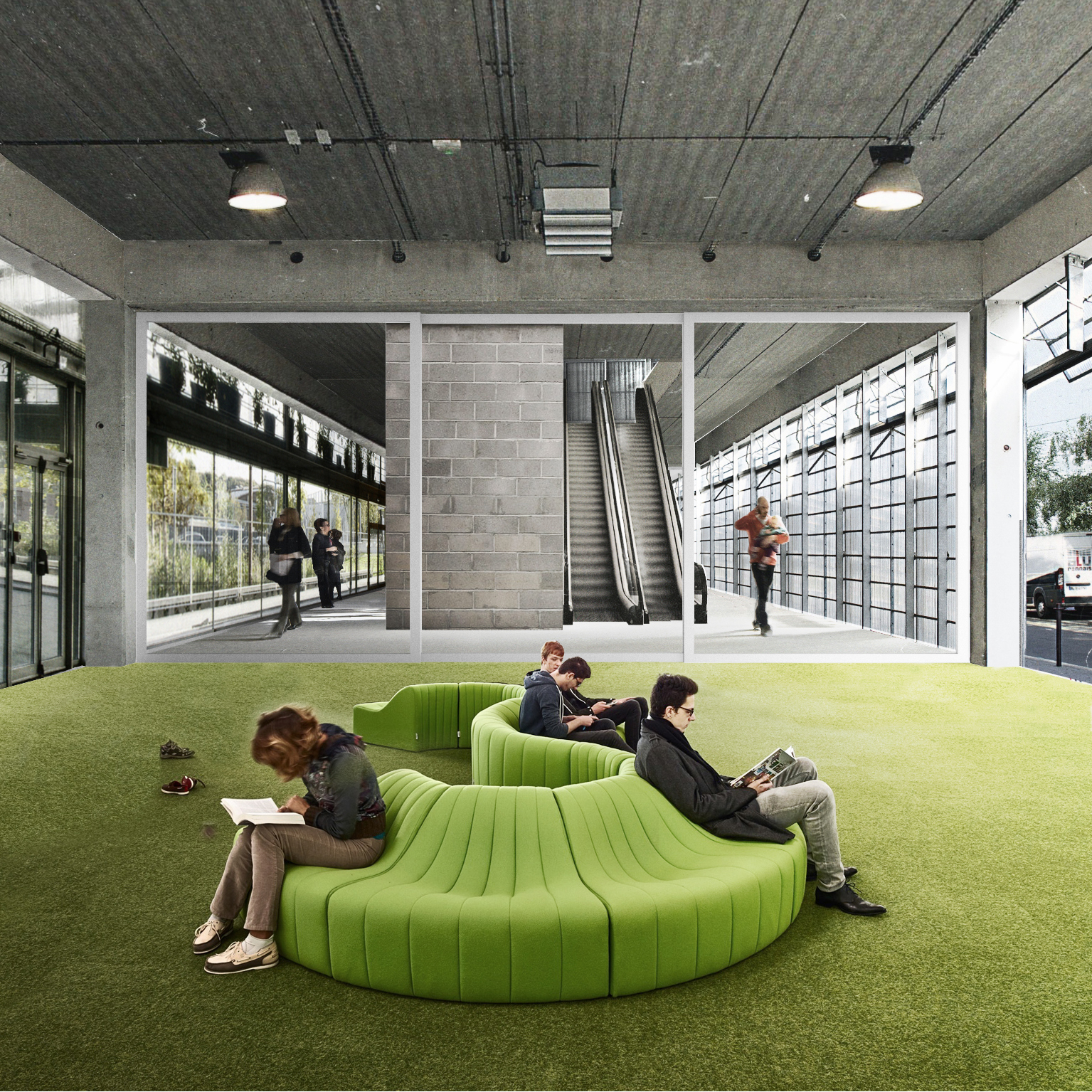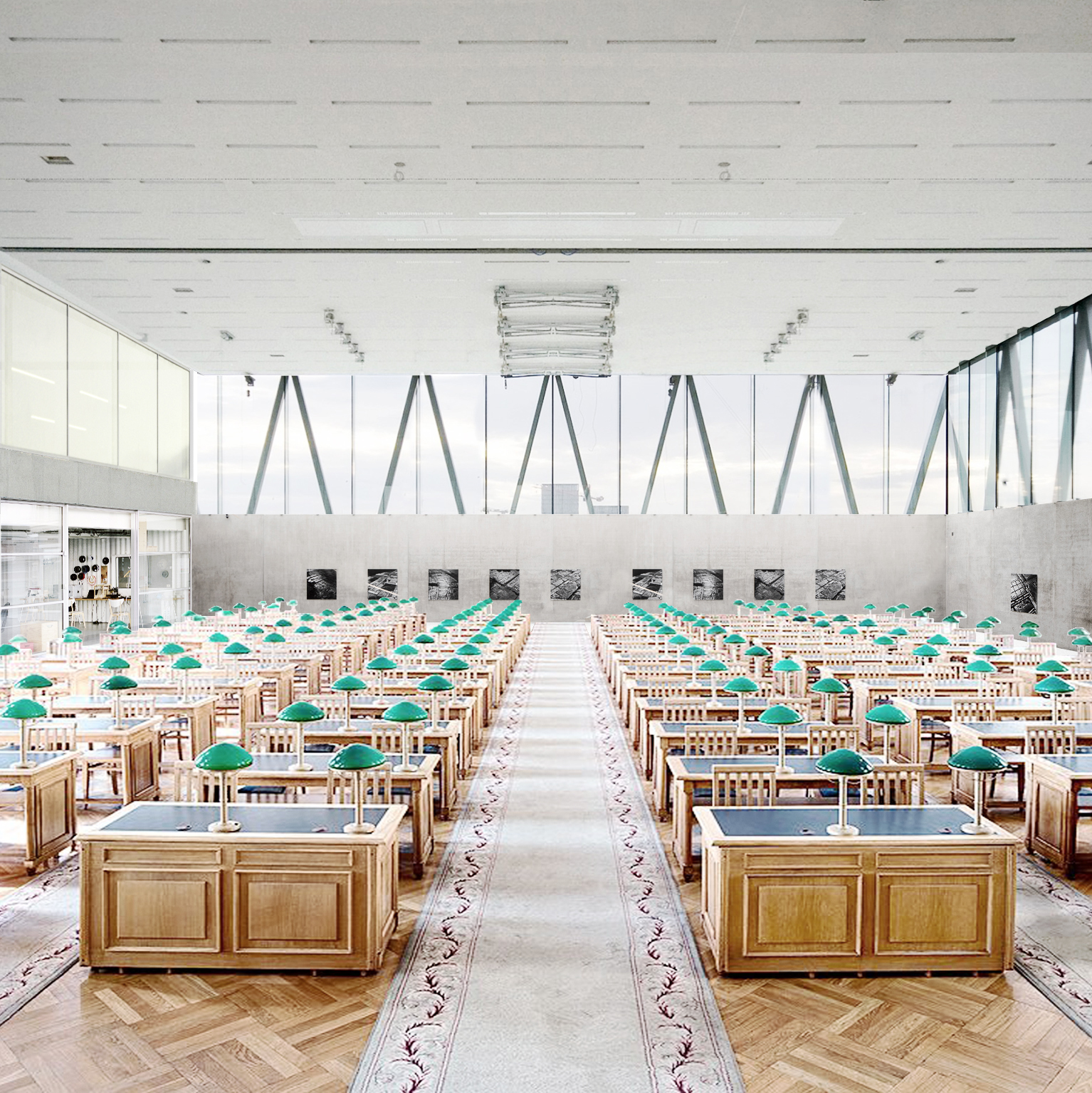Competition for a public library in Montecarmelo, Madrid
Team Andrea Gimeno, Lluís J. Liñán, Xevi Lluch Year 2018
Th(is) PAU is almost alright
Montecarmelo may well be the realization of the PAU utopia. 69% of the residents of this district accord to the social model implicit in every brief regulating this model of urbanization: young couples, one or two children, university degrees, full-time jobs, and a salary 49% higher to Madrid’s average.
These statistics are significantly different to those shown by other PAUs developed in the same period. And yet, all these developments are exactly the same as Montecarmelo from an urban perspective: a serial repetition of quasi-identical blocks sparkled with well-known pieces of architecture.
The PAU utopia, thus, seems to be independent of urban morphology or architectural quality. Its success lies in other layers of the urban, like infrastructural connections or its relation to a particular private institution attracting high-class workforce, such as the German School or the BBVA headquarters.
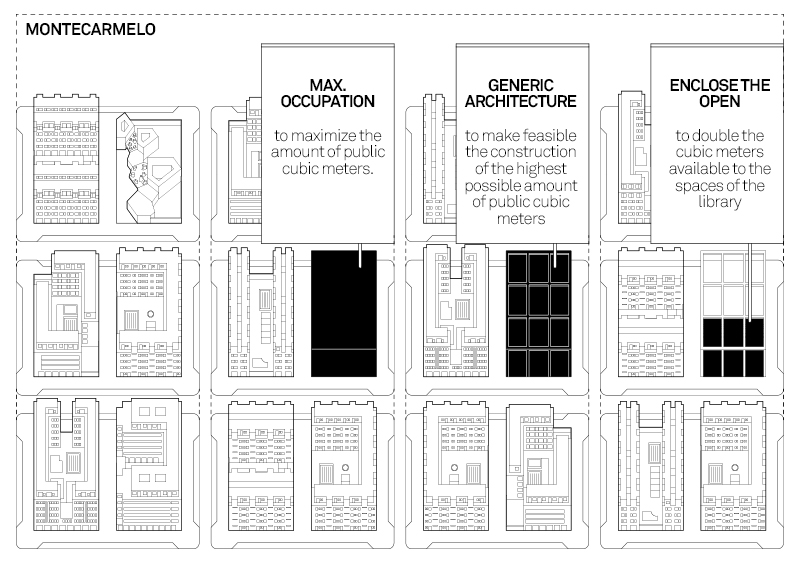
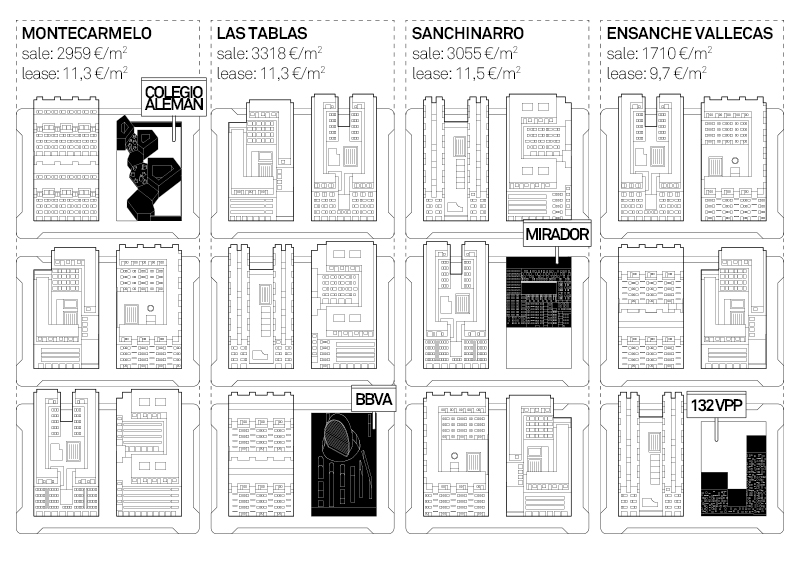
Architecture is irrelevant
What can be the role of a small, public building in this context? Can it produce urbanity on its own? To emphasize its public nature seems to contradict the very essence of an area that values privacy and exclusivity; to accept this condition contradicts the very essence of a building that belongs to all.
What seems clear is that singularity and formal expression aren’t effective as architectural weapons in this scenario. To be disruptive, the building must instead intensify the publicity of its program, that is, the exclusivity of the service it offers to Montecarmelo: openness, adaptability to multiple activities, coalescence of different users, and an apparent lack of commercialization.
The dissolution, even disappearance, of these services in the standardized grid of boulevards and parks that shape the district points at condensation and delineation as the only possible strategies to enable publicity. The singularity of this building isn’t legible in its form, but in the activities it singularizes.




“ceci tuera cela”
Five centuries ago, the printed book killed the communicative function of buildings. Three decades ago, digitization killed the communicative function of books. And yet, the library, a building of books, has not lost its function along the process. On the contrary, it has assimilated new functions related to work and leisure. Luckily, the usual layout of a reading hall adapts evenly to learning, working, and digital recreation.
